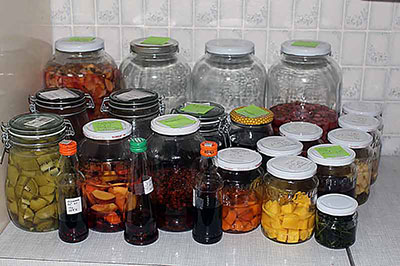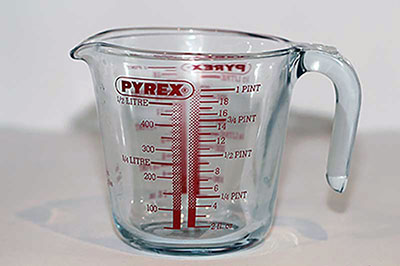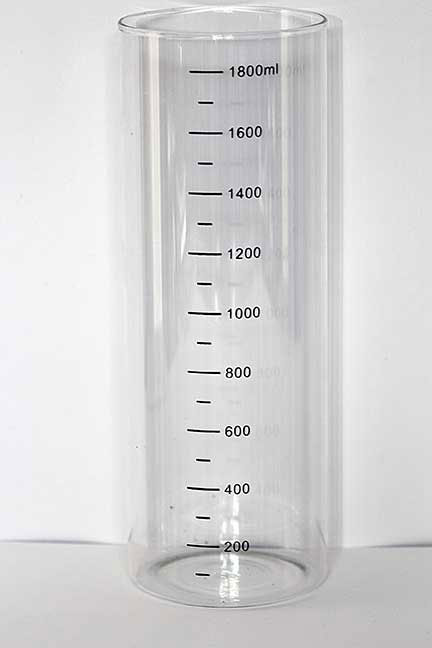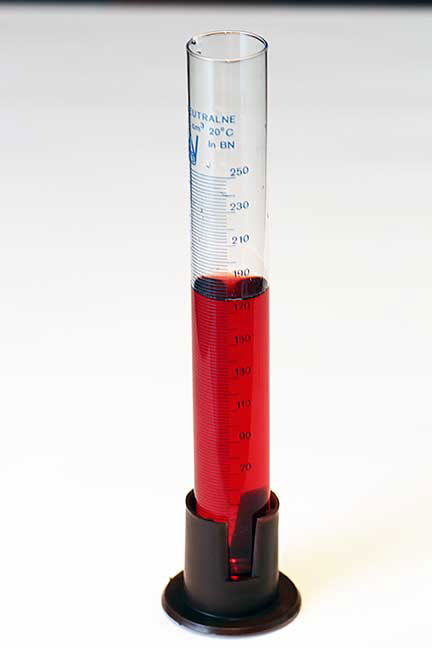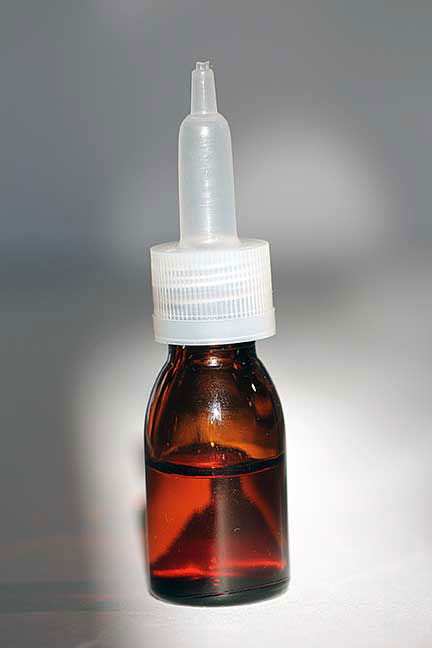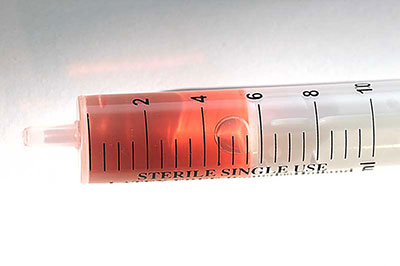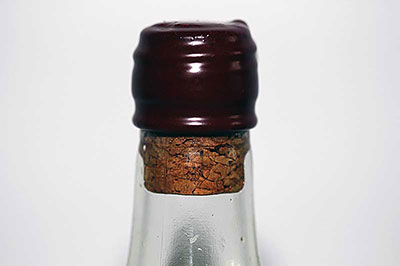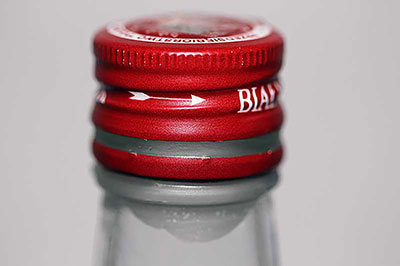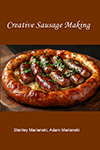Meats and Sausages
Equipment for Making Alcohol Type Beverages
Making alcoholic spirits at home requires basic equipment such as bottles, corks, a scale and other items which are readily available in one's kitchen. A cheese cloth is handy, a measuring cylinder and scale are definitely needed. As there is no fermentation, there is no possibility of gas pressure building up inside, so a glass jar with a twisted lid can be used. This will also prevent loss of alcohol evaporation. Keep in mind that the fruits will expand in volume, so the vessels should be filled only to about 75% capacity.
Glass Jars
Make sure that your container is tight otherwise you will lose alcohol due to evaporation. Many pretty looking containers like the ones with a locking mechanism and a rubber washer are not perfectly tight and an ordinary preserve type glass jar with a twist on lid works better. Always fill it with water, flip it over and see whether it is leaking or not. This simple test can save you a lot of aggravation later.
Glass jars with fruit infusions can be kept in a sunny and warm location. Glass jars with herbal infusions should be kept in a dark and cool area.
Graduated Cup and Cylinder
A graduated cylinder is used to accurately measure the volume of a liquid. A traditional cylinder is usually narrow and tall and has a "spout" for easy pouring. A cylinder without a spout will make your table wet and messy. A small 10, 25 or 50 ml cylinder is useful when measuring essential oils which are applied in very small amounts.
Dropper and Syringes
Eye dropper with a bottle is handy when storing and applying essential oils. Syringes come in many sizes and allow for an accurate volume control.
Sealing Bottles
The bottles which will be stored for a long time should be sealed to prevent the loss of alcohol. Bottle sealing wax comes in different colors. Place sealing wax pellets in a used metal soup can, apply heat and melt them.
Bottles With Corks
Insert cork until it is flush with the bottle. Apply some melted wax on top. Invert bottle around and dip the neck of the bottle into the melted wax. Lift up the bottle and let the wax drip down, turning the bottle around. Place the seal in cold water for 10 seconds.
Bottles with Metal Twist Caps
Apply sealing wax around the cap or dip the neck of the bottle into the melted wax. To remove the cork push your corkscrew through as though the seal wasn't even there. There is no need to scrape the wax off. Melted candle wax is very thin, but it can be used as a last resort. Dip the neck of the bottle into melted candle wax. Remove, let cool, then dip in wax again.

